
Attack of the Humans is a role-playing game published by Rapport Games in 1990.

Attack of the Humans is a role-playing game published by Rapport Games in 1990.
Attack of the Humans is a violent and humorous game, a "B monster-movie" system. [1] The simple rules include only three character attributes (Brains, Fitness, and Common Sense), each of which is the prime requisite for one of three character classes (Braniacs, Athletes, and Typical Persons). [1] Each class gets a certain number of skill points, which are used to buy skills, the base scores of which are linked to the three attributes. [1] There are brief skill descriptions and guidelines for running the game, but the core of the rules is its list of "Common Monsters," including alien brain men, animated apparel, blind telepathic albino city gators, evil stuffed toys, disembodied body parts, floating bottled brains, and possessed household pets. [1]
Attack of the Humans was designed by David Durham, with concept and art by Phil Morrissey, and published by Rapport Games in 1990 as a 96-page book. [1]

The Generic Universal RolePlaying System, or GURPS, is a tabletop role-playing game system designed to allow for play in any game setting. It was created by Steve Jackson Games and first published in 1986 at a time when most such systems were story- or genre-specific.
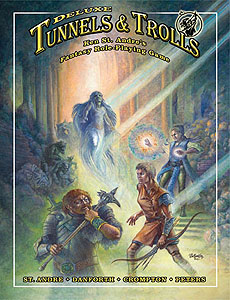
Tunnels & Trolls is a fantasy role-playing game designed by Ken St. Andre and first published in 1975 by Flying Buffalo. The second modern role-playing game published, it was written by Ken St. Andre to be a more accessible alternative to Dungeons & Dragons and is suitable for solitaire, group, and play-by-mail gameplay.
Rolemaster is a tabletop role-playing game published by Iron Crown Enterprises since 1980.
The Dark Eye is a German tabletop role-playing game with a high fantasy theme created by Ulrich Kiesow and launched by Schmidt Spiel & Freizeit GmbH and Droemer Knaur Verlag in 1984. It is the most successful role-playing game on the German market, outselling Dungeons & Dragons. Many years of work on the game have led to a detailed and extensively described game world.
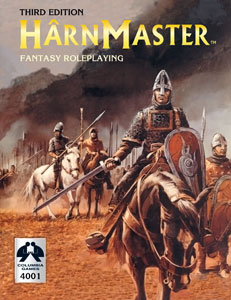
HârnMaster is a fantasy role-playing game based in the fantasy world of Hârn. The system, like the world, was designed primarily by N. Robin Crossby.
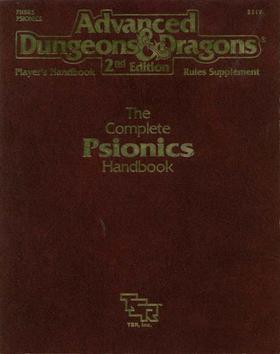
The Complete Psionics Handbook is a supplemental rulebook for the 2nd edition of the Dungeons & Dragons fantasy role-playing game, published in 1991 by TSR, Inc.
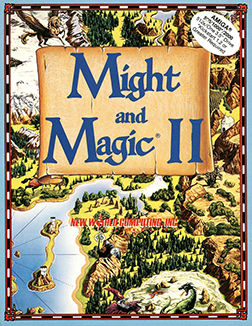
Might and Magic II: Gates to Another World is a role-playing video game developed and published by New World Computing in 1988. It is the sequel to Might and Magic Book One: The Secret of the Inner Sanctum.
Several different editions of the Dungeons & Dragons (D&D) fantasy role-playing game have been produced since 1974. The current publisher of D&D, Wizards of the Coast, produces new materials only for the most current edition of the game. However, many D&D fans continue to play older versions of the game and some third-party companies continue to publish materials compatible with these older editions.

An attribute is a piece of data that describes to what extent a fictional character in a role-playing game possesses a specific natural, in-born characteristic common to all characters in the game. That piece of data is usually an abstract number or, in some cases, a set of dice. Some games use different terms to refer to an attribute, such as statistic, (primary) characteristic or ability. A number of role-playing games like Fate do not use attributes at all.

Character creation is the process of defining a game character or other character. Typically, characters possess individual strengths and weaknesses represented by a set of statistics. Games with a fictional setting may include traits such as race, class, or species. Games with a more contemporary or narrower setting may limit customization to physical and personality traits. This is usually used in role-playing games.
Nightlife is a horror-themed role-playing game first published by Stellar Games in 1990. Many of its innovations would be seen in later games such as White Wolf's World of Darkness.
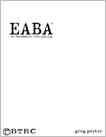
The End All Be All game system, commonly known as EABA and pronounced "ee-buh", is a role-playing game system from Blacksburg Tactical Research Center (BTRC). It is a generic gaming system designed to adapt to any imaginary gaming environment. It was created by Greg Porter in 2003. The game cites the Hero System, GURPS and Call of Cthulhu as influences in its development.

Advanced Fighting Fantasy (AFF) is a British roleplaying game based on the Fighting Fantasy and Sorcery! gamebooks, first published in 1989. Just as the gamebooks, AFF is set in the world of Titan. A second edition of AFF was published in 2011.
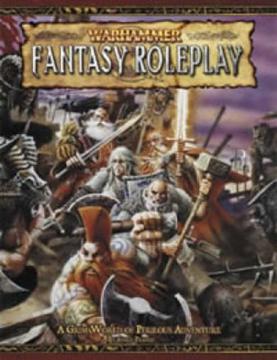
Warhammer Fantasy Roleplay or Warhammer Fantasy Role-Play is a role-playing game set in the Warhammer Fantasy setting, published by Games Workshop or its licensees.
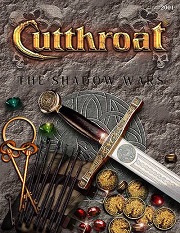
Cutthroat: The Shadow Wars is a fantasy role-playing game designed by Nathan Kaylor and first published by StormWorld Games in 1988.

A tabletop role-playing game, also known as a pen-and-paper role-playing game, is a classification for a role-playing game (RPG) in which the participants describe their characters' actions through speech. Participants determine the actions of their characters based on their characterization, and the actions succeed or fail according to a set formal system of rules and guidelines. Within the rules, players have the freedom to improvise; their choices shape the direction and outcome of the game.

The Dungeons & Dragons Companion Set is an expansion boxed set for the Dungeons & Dragons (D&D) fantasy role-playing game. It was first published in 1984 as an expansion to the Dungeons & Dragons Basic Set.

Time of the Dragon is an accessory for the Dragonlance campaign setting of the Advanced Dungeons & Dragons fantasy role-playing game.
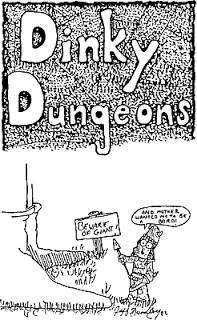
Dinky Dungeons is a role-playing game published by Doc's Games in 1985.

Fifth Cycle is a fantasy role-playing game published by Shield Games in 1990.